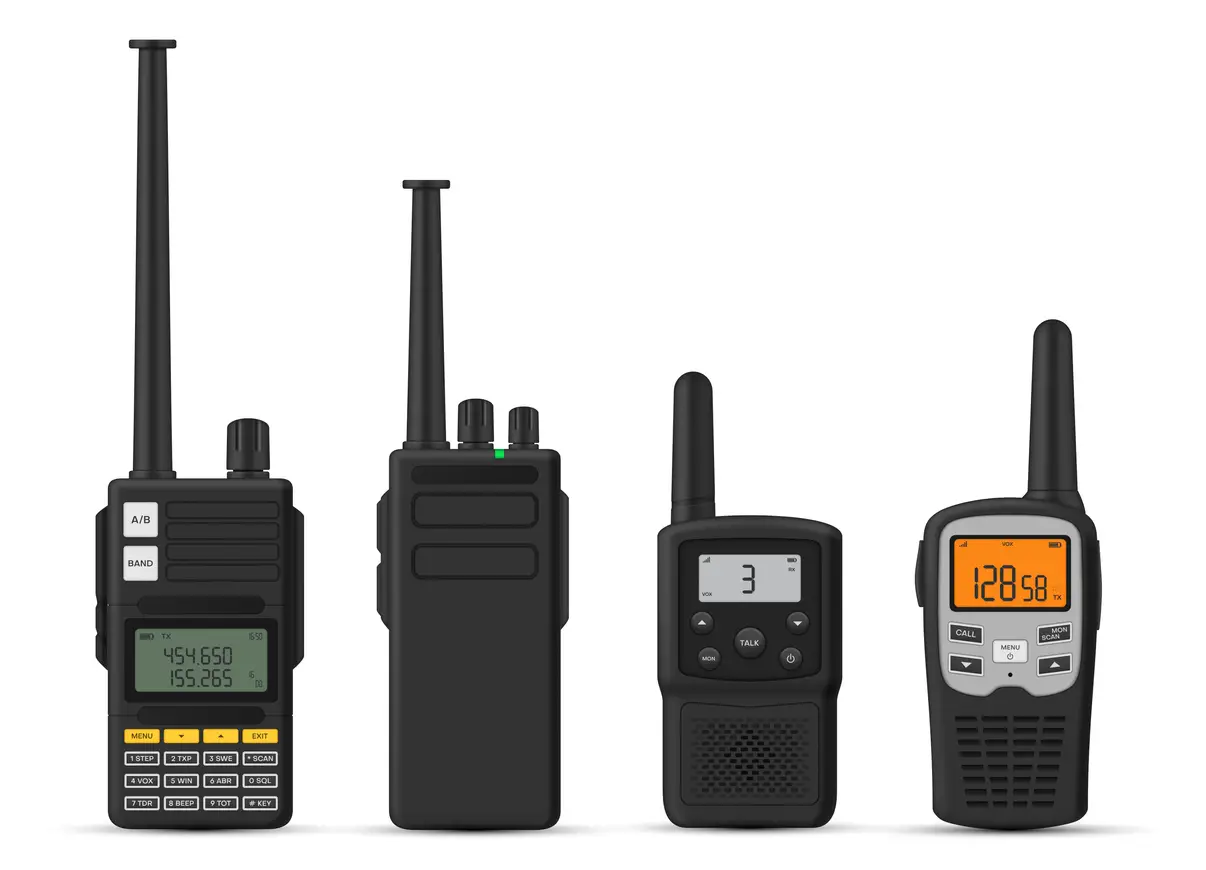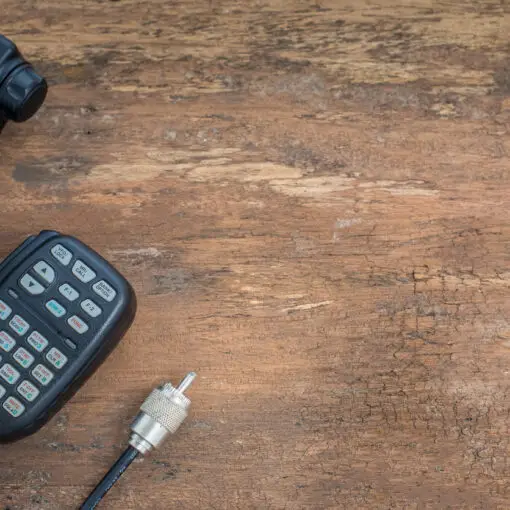Ham radio, also known as amateur radio, has long been a popular means of communication among enthusiasts. However, in today’s rapidly advancing technological era, there are many alternatives to ham radio for those who seek a more lightweight, affordable, or user-friendly communication tool. One does not have to be a licensed amateur radio operator to enjoy the benefits of these alternatives, which open up the exciting world of two-way radio communication to a wider audience.
Some of the alternatives to ham radio include CB (Citizens Band) radio, FRS (Family Radio Service), GMRS (General Mobile Radio Service), and MURS (Multi-Use Radio Service) systems. Each of these options offers unique features and benefits tailored to the needs of different users. By understanding these alternatives and their applications, individuals can make informed decisions about which system best suits their specific communication requirements.
Key Takeaways
- Alternatives to ham radio offer accessible communication options for a wider audience
- CB, FRS, GMRS, and MURS systems are popular alternatives, each with unique features
- Understanding the benefits and applications of each alternative helps in making an informed decision
Alternatives to Ham Radio
When looking for alternatives to ham radio, there are several options to consider. Each option has its own unique set of features and limitations, making them suitable for different communication needs. The following are some popular alternatives to ham radio:
CB Radio: Citizens Band (CB) radio is a short-range radio communication system that operates on 40 channels within the 27 MHz (11 m) band. CB radios are widely used by truckers, off-road enthusiasts, and for general local communication. They require no license to operate and are relatively simple to use. However, the maximum range on a CB radio is typically around 5 miles for mobile radios and up to 10 miles for base stations, depending on terrain and equipment.
FRS Radio: Family Radio Service (FRS) is a low-power, short-range radio communication service that operates on 22 channels within the 462-467 MHz range. FRS radios are designed for recreational use and personal communication among family members and friends. They don’t require a license to operate, but their range is limited to about 1/2 mile to 1 mile, depending on terrain and obstructions. FRS radios are commonly used for activities such as hiking, camping, and skiing.
GMRS Radio: General Mobile Radio Service (GMRS) is a higher-powered, longer-range radio communication system that operates on 22 channels within the 462-467 MHz range, with 8 of those channels being shared with FRS. GMRS radios can transmit up to 50 watts of power and have a range of 5-25 miles, depending on terrain and equipment. To operate a GMRS radio, a license from the Federal Communications Commission (FCC) is required, but no exam is needed to obtain the license.
In summary, CB radio, FRS radio, and GMRS radio are popular alternatives to ham radio, each offering different advantages and limitations for their intended use. Choosing the right option will depend on factors like range requirements, licensing, and intended use of the two-way communication system.
Choosing the Right Alternative
When it comes to choosing the right alternative for ham radio, several factors come into play. These include the intended purpose, such as business or personal use, the need for communication within family or groups, and budget constraints. This section will outline some popular alternatives that can fulfill various communication needs while being affordable and versatile.
One popular option for personal and group communication is the Family Radio Service (FRS). FRS radios operate on specific frequencies and don’t require a license for use. They are an excellent choice for families, friends, or small teams that need to stay in touch over short distances. FRS radios are generally affordable and easy to use, making them suitable for a wide range of people.
Businesses and organizations may benefit from the General Mobile Radio Service (GMRS). GMRS radios offer higher power output and slightly longer range capabilities than FRS radios. Although a GMRS license is required, it covers the entire family, making it cost-effective for both personal and professional applications.
Multi-Use Radio Service (MURS) is another unlicensed radio service that offers five VHF frequencies for communication over longer distances. MURS radios are ideal for businesses or groups requiring reliable and clear communication without reliance on a network or a grid. The added range and versatility make MURS radios a popular choice for agriculture, outdoor events, and emergency services.
Lastly, Citizens Band (CB) radios provide a means of communication for both personal and business use. CB radios operate on 40 shared channels within the 27 MHz frequency range. They have been a popular choice for truckers and travelers for decades, offering an affordable communication solution with a more extensive range than FRS or MURS.
In conclusion, selecting the appropriate radio communication alternative to ham radio requires a clear understanding of the purpose, the intended users, and the range requirements. By carefully evaluating and comparing FRS, GMRS, MURS, and CB radios, one can find a suitable solution that fulfills their specific needs without compromising on quality or affordability.
Understanding Alternatives
When looking for alternatives to ham radio, it is essential to consider the key features and characteristics that might suit the user’s specific needs. Some of these features include transmitting capabilities, wattage, ability to communicate over long distances, battery life, whether the radio operates on UHF or VHF frequencies, dual watch capabilities, and whether they utilize multi-use radio service (MURS).
One popular alternative to ham radio is the Multi-Use Radio Service (MURS). MURS operates on five FM channels in the VHF band around 151 MHz, providing users with unlicensed communication options (source). However, MURS radios have limitations, such as relatively short-range communication as they cannot transmit over long distances.
Another option for two-way communication is the Family Radio Service (FRS). FRS is designed for short-range communication and operates on 22 channels in the UHF range. The radios typically use low wattage, resulting in limited coverage. FRS radios are suitable for situations where users need to communicate within a small area, such as between family members during outdoor activities.
The General Mobile Radio Service (GMRS) is another alternative with more advanced features. It operates on 30 channels in the UHF range, providing users with better signal propagation and penetration in urban environments. GMRS radios require a license but offer higher power output (up to 50 watts) and the potential for longer communication distances, surpassing the range of MURS and FRS. Dual watch functionality is also common in GMRS radios, allowing users to monitor two channels simultaneously.
Finally, Citizens Band (CB) radio is an option for those wanting a license-free, long-distance communication system. CB radios operate on 40 channels in the high-frequency range and can transmit up to 4 watts. CB radios are often used by truckers and outdoor enthusiasts, providing them with a reliable medium to communicate during emergencies and traffic conditions.
In conclusion, there are several alternatives to ham radio, each with its pros and cons. When selecting a communication system, it is crucial to consider factors such as licensing requirements, transmission range, battery life, and frequency band to find the best option for the user’s specific needs.
Use of Alternatives in Different Scenarios
In emergency situations, communication is crucial for individuals and organizations, and alternative radio communication systems can be vital when traditional methods are not available. For instance, Multi-Use Radio Service (MURS) is a popular choice that operates in the VHF band around 151 MHz and requires no license source. Although MURS has limited distance coverage, it may be suitable for local communication during emergencies, such as natural disasters.
For communication over varying distances, different types of two-way radios can be considered, such as Citizens Band (CB) radio for shorter range and General Mobile Radio Service (GMRS) for slightly longer distances, up to several miles source. CB and GMRS radios are useful for non-ham users, as they provide unlicensed options for communication, although GMRS operators need to obtain a license to get full access to certain frequencies.
In the realm of business use, several alternative radio options can serve specific purposes. For instance, the Family Radio Service (FRS) is a useful choice for short-range communication within workplaces or between team members during eventssource. The compact design and lack of licensing requirements make FRS devices an accessible option for businesses requiring simple, effective communication between employees.
Amateur radio enthusiasts who do not currently hold a ham radio license may also explore VHF and UHF bands as a starting point. Dual-band handheld transceivers that operate on both 2-meter and 70-centimeter bands are popular among budding amateur radio users source. These devices offer the opportunity to practice solid communication skills while preparing for ham radio license tests.
In summary, various alternative radio communication options can serve different purposes depending on the scenario, such as emergency response, business use, or amateur radio exploration. By understanding the specific requirements and limitations of each alternative system, users can effectively communicate in diverse situations while adhering to regulations and best practices.
Digital and GPS Features
Ham radio technology has significantly evolved over the years, offering more advanced capabilities. Digital modes and GPS features are some of the most notable advancements in the world of ham radio communication. These features have improved the overall functionality and user experience of ham radio operators.
Digital modes have brought about increased reliability, particularly in weak signal conditions. Some popular digital modes used by amateur radio operators include D-STAR, System Fusion, and DMR. These modes allow for clear voice communication, text messaging, and even image and data transfer. In addition, digital modes enable automatic error correction, leading to more accurate and efficient communication.
GPS, on the other hand, has greatly enhanced the mobility and tracking capabilities of ham radio users. By integrating GPS technology into ham radio systems, operators can send and receive location information in real time. This feature is particularly useful in search-and-rescue operations, tracking moving objects (such as balloons or vehicles), and during outdoor adventures like hiking and off-roading.
One popular application of GPS in ham radio is the Amateur Packet Reporting System (APRS). This system enables radio operators to exchange messages, position reports, and other information using GPS coordinates. In addition to location tracking, APRS also allows for weather reporting, telemetry, and emergency communication.
In conclusion, digital modes and GPS features have significantly expanded the functionality of ham radio, making it more versatile and useful for various applications. Whether it’s maintaining clear communication in challenging conditions, tracking locations during outdoor adventures, or participating in emergency communication networks, these advancements have made ham radio an invaluable tool for both hobbyists and professionals
Conclusion
In summary, there exist several alternatives to ham radios for radio operators who seek different communication options. One such option is the Multi-Use Radio Service (MURS), which operates on five FM channels in the VHF band around 151 MHz without requiring a license.
Another option is investing in two-way radios like GMRS and FRS, which can transmit and receive voice communications without the need for a ham radio license. Though these devices provide ease and convenience, they generally lack the long-range capabilities of ham radios.
One interesting development in the world of radio communications is the M17 project. This open-source endeavor aims to create a ham radio transceiver that could potentially disrupt proprietary ham radio protocols and offer an alternative to traditional systems.
For radio enthusiasts still considering ham radio, obtaining a license is not a daunting task. With a minimum investment of time and money, prospective operators can obtain a technician and general level license, unlocking the potential for global communication.
Taking all the above options into consideration, it is evident that radio operators have access to a variety of communication alternatives to the traditional ham radios. Each option offers unique benefits, making them suitable for various needs and preferences.
Frequently Asked Questions
What are some affordable options for survival communication?
There are several affordable communication options for survival situations. These include the Multi-Use Radio Service (MURS), Family Radio Service (FRS), and General Mobile Radio Service (GMRS). MURS operates on five VHF channels around 151 MHz, offering short-range communication without a license source. FRS operates on 22 UHF channels and is an unlicensed communication option. GMRS requires a license but can provide longer ranges than FRS through the use of repeaters source.
How do I obtain a ham radio license?
To obtain a ham radio license, you need to study for and pass an exam administered by authorized Volunteer Examiners. There are three levels of licensing: Technician, General, and Extra. Each level grants increasing privileges on different bands and modes of operation. It typically costs around $15 to take the exam, and study materials are widely available source.
Which frequencies are commonly used in ham radio?
Ham radio frequencies vary depending on the license class and mode of operation. Frequencies are distributed across multiple bands, ranging from very low frequency (VLF) to ultra-high frequency (UHF). Some commonly used ham radio bands include 80 meters, 40 meters, 20 meters (for long-distance HF communication), 2 meters (for local VHF communication), and 70 centimeters (for UHF communication) source.
How do GMRS radios compare to ham radios?
GMRS radios operate on UHF channels and are limited to short-range communication, usually about a few miles. However, with the use of repeaters, GMRS users can achieve longer ranges. Unlike CB radios, which operate on AM, GMRS radios use FM, providing clearer audio quality. Ham radios offer more options in terms of frequencies, bands, and modes of operation. While GMRS requires only a single license, ham radio operators need to pass exams to obtain different levels of licenses source.
Are there any open frequencies for ham radio usage?
Ham radio frequencies are allocated by the Federal Communications Commission (FCC) in the United States, and there are specific bands designated for amateur use. Licensed operators have access to these bands within the limitations of their particular license class. These bands are not considered “open” in the sense of being unregulated, but they provide plenty of opportunities for communication and experimentation among ham radio enthusiasts source.
Is the popularity of ham radio declining?
The popularity of ham radio fluctuates over time. While modern technologies such as the internet and cell phones provide more convenient communication methods, there remains a dedicated community of amateur radio operators worldwide. Ham radio continues to serve as an essential communication tool during disasters and emergencies when traditional networks are inaccessible or unreliable. The hobby also attracts individuals interested in electronics, science, and tinkering source.





